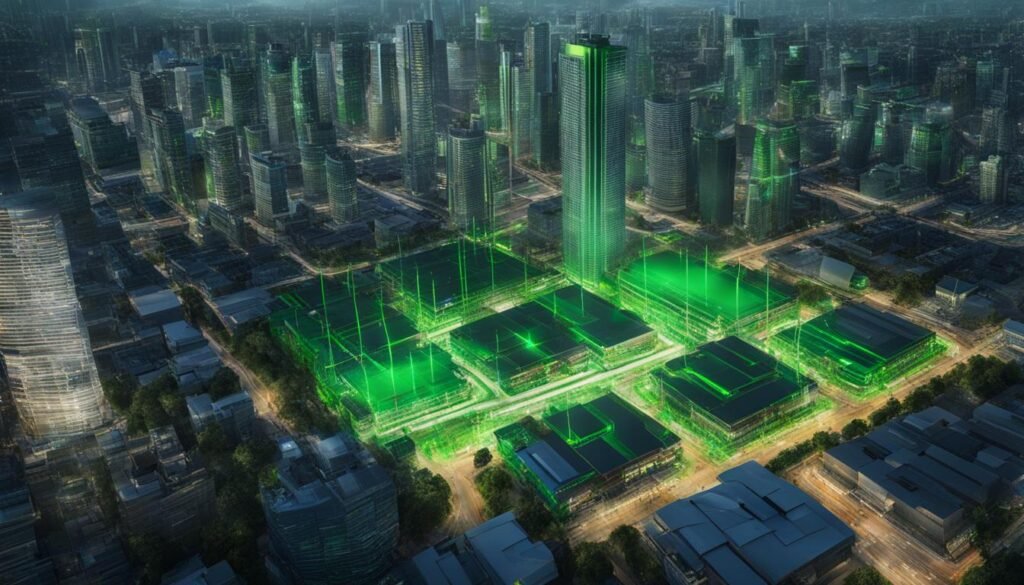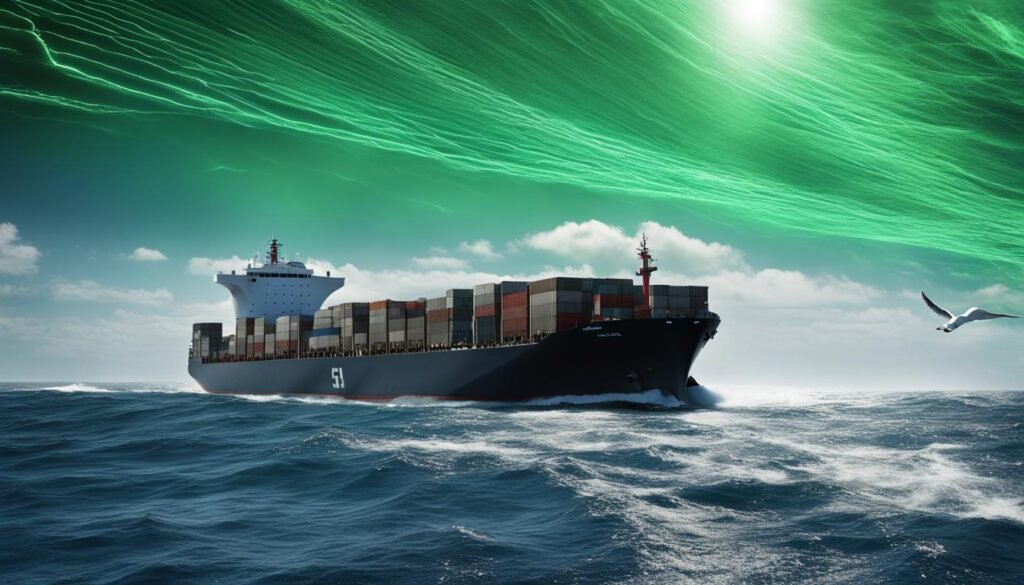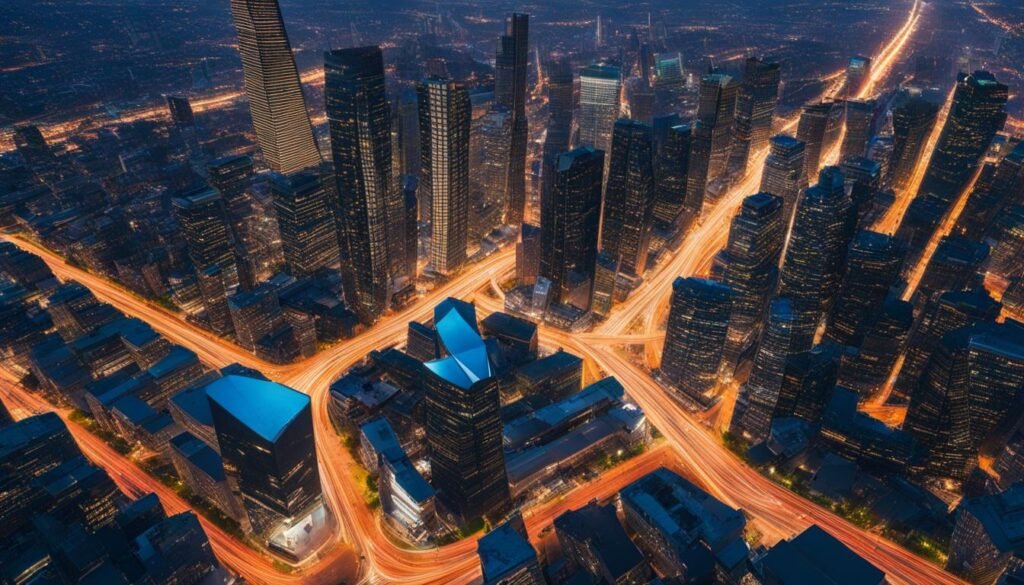Contents
Lidar, short for Light Detection and Ranging, is a remote sensing technology that uses pulsed laser beams to accurately measure distances to objects. It works by emitting laser light and measuring the time it takes for the light to return to the sensor. This technology has the potential to revolutionize the field of mapping by providing highly detailed and accurate data. From terrain mapping in the 1970s to the miniaturization of sensors and the advancements in artificial intelligence, Lidar has come a long way. Today, it is being widely used in various industries and applications, particularly in the field of autonomous vehicles.
Key Takeaways:
- Lidar, or Light Detection and Ranging, is a remote sensing technology that uses laser beams to measure distances accurately.
- Lidar technology has the potential to revolutionize mapping by providing highly detailed and accurate data.
- Advancements in Lidar technology, such as miniaturization and increased laser diode commonality, have made it more accessible and capable of scanning hundreds of thousands of beams per second at ranges of 100m.
- Lidar plays a crucial role in the field of autonomous vehicles, enabling obstacle detection and autonomous navigation.
- In addition to mapping and surveying, Lidar technology finds extensive use in the maritime sector for object detection and avoidance.
What is Lidar and How Does it Work?
Lidar, also known as Light Detection and Ranging, is a powerful remote sensing technology that uses pulsed laser beams to accurately measure distances and map out an environment. Unlike radar and sonar systems that rely on radio waves and sound waves, Lidar utilizes laser precision to create highly detailed maps. This innovative technology works on the principle of time of flight measurement, where a laser beam is emitted towards an object, reflected off of it, and then collected by a sensor. By analyzing the time it takes for the laser light to return to the sensor, Lidar can calculate the distance to the object with remarkable accuracy.
Lidar technology has evolved significantly in recent years, with advancements in laser diode commonality and miniaturization. These improvements have made Lidar more accessible and capable of scanning hundreds of thousands of laser beams per second at ranges of up to 100 meters. The data collected by Lidar is used to create detailed maps known as “point clouds,” which consist of individual data points representing distinct features in the environment. This level of precision enables Lidar to capture intricate details and provide unparalleled spatial information.
“Lidar provides laser precision mapping, creating a detailed map of individual features in what is known as a ‘point cloud.'”
With its laser precision, Lidar technology has found applications in various fields, including autonomous vehicles, environmental monitoring, and urban planning. Its ability to generate highly accurate and detailed maps has revolutionized industries that depend on precise spatial information. By leveraging the power of Lidar, researchers and professionals can gain insights into the physical world with unprecedented precision and accuracy.
Table: Advantages of Lidar Technology
| Advantages | Description |
|---|---|
| High Precision | Lidar provides accurate distance measurements and precise mapping capabilities, allowing for detailed analysis and modeling. |
| Fast Data Acquisition | Lidar can scan hundreds of thousands of laser beams per second, enabling quick and efficient data collection. |
| 3D Visualization | The point cloud data generated by Lidar can be used to create detailed 3D models, providing a comprehensive view of the environment. |
| Object Recognition | Lidar technology can detect and classify objects in the environment, making it valuable for applications such as autonomous vehicles and obstacle detection. |
Applications of Lidar Technology in Autonomous Vehicles
Lidar technology has revolutionized the field of autonomous vehicles by enabling them to navigate and make human-like decisions. Its applications in this sector are diverse and essential for achieving higher levels of automation.
One key application of Lidar technology in autonomous vehicles is obstacle detection. By emitting laser beams and accurately measuring the time it takes for the light to return, Lidar sensors can detect and identify obstacles in the vehicle’s path. This crucial information allows the vehicle’s autonomous system to make real-time decisions and take appropriate actions to avoid collisions.
In addition to obstacle detection, Lidar has proven invaluable in features like Adaptive Cruise Control (ACC). Lidar sensors provide information about the surrounding vehicles, allowing the autonomous vehicle to maintain a safe distance and adjust its speed accordingly. This technology enhances the safety and efficiency of autonomous vehicles on the road.
Furthermore, Lidar technology plays a crucial role in achieving higher levels of autonomy in vehicles. It is a key sensor in the autonomous vehicle industry and is instrumental in enabling vehicles to operate without human intervention. Lidar sensors provide accurate and detailed information about the road and surroundings, allowing autonomous vehicles to navigate complex environments and make informed decisions.
Overall, Lidar technology’s applications in autonomous vehicles are vital for enhancing safety, improving efficiency, and advancing the future of transportation.
Table: Applications of Lidar Technology in Autonomous Vehicles
| Application | Description |
|---|---|
| Obstacle Detection | Lidar sensors detect and identify obstacles in the vehicle’s path, enabling autonomous systems to avoid collisions. |
| Adaptive Cruise Control (ACC) | Lidar sensors provide information about surrounding vehicles, allowing autonomous vehicles to maintain a safe distance and adjust their speed accordingly. |
| Higher Levels of Autonomy | Lidar technology plays a crucial role in achieving higher levels of autonomy by providing accurate and detailed information about the road and surroundings. |
Lidar in Mapping and Surveying Services

Lidar technology has revolutionized the field of mapping and surveying, enabling the creation of high-resolution maps and detailed 3D models. With its ability to capture accurate elevation data and provide precise measurements, Lidar has become an indispensable tool in various industries.
In the field of mapping, Lidar is used to accurately capture the terrain, buildings, and other features of an area. By emitting laser beams and measuring the time it takes for the light to return, Lidar creates a detailed point cloud that can be used to generate highly accurate maps. This data is invaluable for urban planning, infrastructure development, and environmental monitoring.
In surveying services, Lidar is used to capture precise measurements of land, structures, and other objects. It provides detailed information about the shape and elevation of the land, allowing surveyors to create accurate topographic maps. Lidar technology has greatly improved the efficiency and accuracy of surveying, reducing the need for manual measurements and enabling faster data collection.
One of the key advantages of Lidar technology in mapping and surveying is its ability to capture data from a distance, making it ideal for large-scale projects. Additionally, Lidar can penetrate dense vegetation and capture data in challenging terrains, providing valuable insights for forestry, agriculture, and disaster management.
Lidar Applications in Mapping and Surveying Services:
- Urban planning: Lidar enables the creation of detailed urban models, allowing city planners to visualize and analyze the impact of proposed developments.
- Agriculture: Lidar can be used to monitor crop health, measure vegetation density, and optimize irrigation strategies.
- Environmental monitoring: Lidar data helps in monitoring changes in land cover, detecting deforestation, and assessing the impact of natural disasters.
- Disaster management: Lidar aids in creating accurate flood maps, assessing the risk of landslides, and planning emergency response strategies.
Overall, Lidar technology has transformed mapping and surveying services, providing highly accurate and detailed data for a wide range of applications. Its ability to capture precise measurements from a distance and in challenging environments makes it an invaluable tool for professionals in these fields.
| Lidar Applications | Benefits |
|---|---|
| Urban planning | Visualization and analysis of proposed developments |
| Agriculture | Monitoring crop health and optimizing irrigation strategies |
| Environmental monitoring | Detecting land cover changes and assessing the impact of natural disasters |
| Disaster management | Creating accurate flood maps and planning emergency response strategies |
Lidar technology continues to evolve, with advancements in sensor capabilities and data processing algorithms. This ensures that mapping and surveying professionals have access to even more accurate and detailed data, enabling them to make informed decisions and drive innovation in their respective fields.
Lidar Technology in the Maritime Sector

Lidar technology is revolutionizing not only land-based applications but also the maritime sector. With its advanced capabilities in object detection and autonomous navigation, Lidar is playing a crucial role in improving safety and efficiency in maritime operations. By providing accurate and detailed data about the surrounding environment, including other vessels, obstacles, and coastal areas, Lidar enables autonomous navigation systems to make informed decisions and avoid potential hazards. This technology has the potential to transform the way maritime activities are conducted, from monitoring ocean ecosystems to mapping coastal areas with high precision.
One of the key advantages of Lidar technology in the maritime sector is its ability to offer a wide range of data, including range, resolution, and accuracy. This makes it an essential tool for creating detailed maps and models of coastal areas, helping to identify potential navigational challenges and providing valuable insights for sustainable maritime planning. It also enables efficient and safe navigation, reducing the risk of accidents and collisions. With Lidar technology, maritime operators can enhance their situational awareness and make informed decisions, ensuring the smooth execution of various tasks in the maritime industry.
“Lidar technology has become an invaluable asset in the maritime sector, providing us with the ability to detect and avoid obstacles, map coastal areas with exceptional precision, and enhance overall safety and efficiency in our operations.” – Maritime industry expert
Applications of Lidar in the Maritime Sector:
- Object detection and avoidance in autonomous navigation systems
- Coastal area mapping with high precision
- Monitoring ocean ecosystems
- Identifying potential hazards in the maritime environment
By leveraging Lidar technology in the maritime sector, stakeholders can unlock a wide range of benefits, including improved safety, enhanced efficiency, and greater sustainability. As this technology continues to evolve and advance, it holds tremendous potential for shaping the future of maritime operations and navigation.
| Lidar Technology in the Maritime Sector | Benefits |
|---|---|
| Object detection and avoidance in autonomous navigation systems | Improved safety in maritime operations |
| Coastal area mapping with high precision | Enhanced navigational accuracy |
| Monitoring ocean ecosystems | Environmental conservation and management |
| Identifying potential hazards in the maritime environment | Early warning systems for collision prevention |
Conclusion
Lidar technology has revolutionized the field of mapping, autonomous vehicles, surveying, and the maritime sector. Its highly accurate and detailed data has opened up new possibilities and applications in various industries. With continuous advancements in sensor technology, artificial intelligence, and connectivity, Lidar technology is expected to evolve even further in the future.
One of the future trends in Lidar technology is the development of smaller, more lightweight systems. These advancements will make Lidar more accessible and enable its integration into a wider range of applications. Additionally, the integration of multi-sensor data fusion will enhance the capabilities of Lidar systems, allowing for more comprehensive and accurate data collection.
Another exciting advancement in Lidar technology is the use of deep learning algorithms for data analysis. This will enable Lidar systems to not only collect data but also analyze and interpret it, providing valuable insights and facilitating decision-making processes.
Lidar technology holds tremendous potential and is set to play a significant role in shaping the future of digital mapping systems and autonomous mobility. As research and development continue to push the boundaries of what is possible, we can expect to see even more innovative applications and advancements in Lidar technology in the years to come.
FAQ
What is Lidar and how does it work?
Lidar, short for Light Detection and Ranging, is a remote sensing technology that uses pulsed laser beams to accurately measure distances to objects. It works by emitting laser light and measuring the time it takes for the light to return to the sensor.
What are the applications of Lidar technology in autonomous vehicles?
Lidar plays a crucial role in autonomous vehicles by providing information about the road and surroundings. It can detect road markings, obstacles, and other vehicles, enabling the vehicle to make human-like decisions. Lidar technology is essential for features like Adaptive Cruise Control (ACC) and is crucial for safe navigation and collision avoidance.
How is Lidar used in mapping and surveying services?
Lidar is used to create high-resolution maps and 3D models of the environment. It provides precise elevation data and can be used to create topographic maps. Lidar mapping finds applications in urban planning, agriculture, environmental monitoring, and disaster management.
What role does Lidar technology play in the maritime sector?
Lidar technology is used for object detection and avoidance in autonomous navigation systems in the maritime sector. It provides valuable data about the surrounding environment, including other vessels, obstacles, and coastal areas. Lidar can help monitor ocean ecosystems, map coastal areas, and detect potential hazards in the maritime environment.
What are the future trends in Lidar technology?
Future trends in Lidar technology include the development of smaller, more lightweight systems, integration of multi-sensor data fusion, and the use of deep learning algorithms for data analysis. Lidar technology is continuously evolving and is set to play a significant role in shaping the future of digital mapping systems and autonomous mobility.



